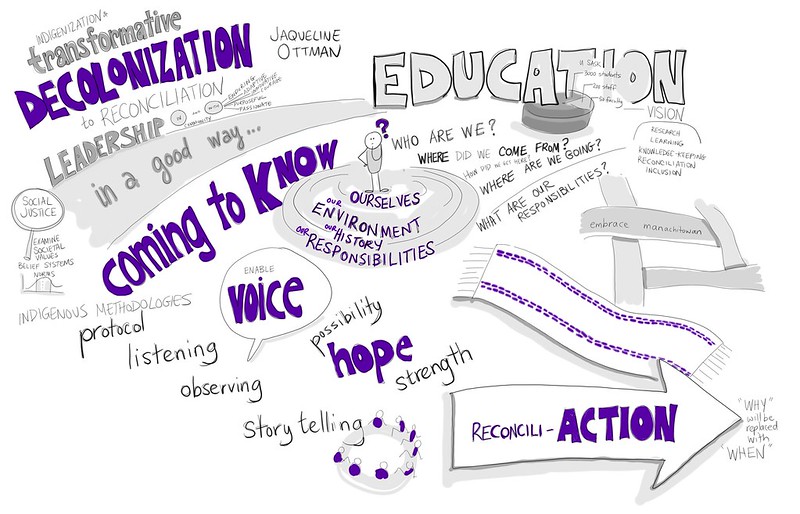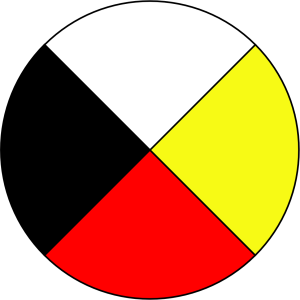Commitment to Equity, Diversity, Inclusion and Indigenization in Chemistry
Equity, Diversity, and Inclusion in Chemistry
Our colleges (Equity, diversity, inclusion & belonging – Georgian College [New Tab] recognize the need to support and encourage equity, diversity, inclusion and belonging (EDIB) in our teaching practices. When discussing equity, diversity and inclusion in the context of a chemistry classroom, the nature of the traditional science classroom and way of learning need to be questioned. In compiling this resource, the contributors have made conscious efforts to include examples of diversity of representation with chemistry scholars.
But examples of diversity of scholars are only the start of incorporating EDIB chemistry teaching. So much more comes from how the conversations about the development and progression of chemistry are led and respected in the classroom environment. It starts with the building of an inclusive community through respect and understanding of everyone’s contribution to the classroom. It continues through the development of a metanarrative to the science content. And it continues further through the acknowledgement that objectivity is not singular but multifaceted. Below are suggestions of discussion topics that faculty and students can use to encourage the inclusion of EDIB.
- What questions were asked and who was allowed to ask those questions as the science of chemistry developed?
- Whose agenda and research received funding and support to “discover” these scientific concepts?
- Who was hired to teach the next generation and lead the conversations about chemistry?
- Whose interests and pursuits are followed?
- In pharmaceutical industry (for example), who were the subjects that were used for testing?
- In industrial chemical industry (for example), who had to become ill or die to know that a chemical was toxic?
- What experiences did individuals have in their chemistry careers (personalize this whenever possible)?
- Who is working in the background of the famous discoveries?
- How is the history of erasure and the value of representation included in chemistry?
- What might this area of study or concept have looked like if a female/visible minority/LGBTQ2+ person have discovered it?
To further support EDIB within chemistry and science faculties, consider:
- Setting up a committee of peers to review curriculum, hiring and other components of program areas
- Creating a culture of support for future scholars and researchers
- Offering opportunities to complete critical inquiry and equity analysis of curriculum
- Joining existing organizations working to promote EDI initiatives in science and chemistry
Several chemistry departments at Ontario and Canadian institutions are publicly stating their commitment to EDIB. Read statements from University of Toronto [New Tab], University of Waterloo [New Tab] and University of British Columbia [New Tab]. The Chemical Institute of Canada (CIC) [New Tab] promotes EDI initiatives and there are local groups across the country representing the Canadians Working for Inclusivity in Chemical Sciences, Engineering and Technology (CWIC) Network [New Tab]. Georgian College is a facilitating participant with the Inclusive STEM Teaching Project [New Tab] working to support educators in their EDIB development.
In addition to the scientists highlighted in this resource, all scientists represent diverse cultures and experiences. Here are some suggested resources to expand the EDIB conversation:
- American Chemistry Society Reactions (Twitter: @ACSReactions) has a commemoration tweet of Juneteenth2022 highlighting Black chemists and their impact on our lives. Reactions on Twitter: “To commemorate #juneteenth2022 we’re looking at handful of Black chemists and the impact they’ve made on our lives. Meet Alice Ball. She developed the “Ball Method,” which was the most effective treatment for leprosy during the early 20th century. https://t.co/d7dnkmJ4ui” / Twitter [New Tab]
- Compound Interest (curated by Andy Brunning) has a Women in Chemistry category of infographics that highlights 100s of women throughout history and today who excel in the field of chemistry. Women in Chemistry – Compound Interest (compoundchem.com) [New Tab]
- “My STEM Stories” presented by CWIC is a YouTube channel with video highlights of some amazing current STEM researchers and scientists. “My STEM Stories” presented by CWIC – YouTube [New Tab]
- Journal of Chemical Education published an entire special issue dedicated to Diversity, Equity, Inclusion and Respect in Chemistry Education Research and Practice. Journal of Chemical Education | Vol 99, No 1 (acs.org) [New Tab]
- C&EN (Chemical and Engineering News) published Out and Proud Celebrating LGBTQ+ chemists (Out and proud (acs.org) [New Tab]) and a Movers and Shakers article highlighting LGBTQ+ chemists past and present. LGBTQ+ chemists you should know about (acs.org) [New Tab]
- Royal Society of Chemistry offers an LGBT+ toolkit to support inclusivity. LGBT+ toolkit (rsc.org) [New Tab]
Indigenization in Chemistry
In 2015, the Truth and Reconciliation Commission of Canada (TRC), led by Honourable Justice Murray Sinclair, released Honouring the Truth, Reconciling for the Future: Summary of the Final Report of the Truth and Reconciliation Commission of Canada [New Tab] [PDF]. Their extensive consultative research process resulted in 94 Calls to Action (CTA) in order to begin dismantling the systemic racism devastating Indigenous Peoples in Canada. The CTA are outlined in What Are the Truth & Reconciliation Commission’s 94 Calls to Action & How Are We Working Toward Achieving Them Today? (reconciliationeducation.ca) [New Tab] When considering how to incorporate actions towards reconciliation in the chemistry classroom, we need to start by educating ourselves on the true history of Canada and our personal acknowledgement to the land on which we live.
“Education got us into this mess and education will get us out of it.” (Renkas, 2021)
“Education is the key to walking on this journey of reconciliation. Teachers in particular have a sacred responsibility to ensure that all their children, regardless of their heritage, are able to think about four key questions throughout their education:
“Where do I come from?”, “Where am I going?”, “Why am I here?”, and most importantly, “Who am I?”” (Ore, 2021) (Waters et al., 2022)
~ Honourable Justice Murray Sinclair (chair of the Truth and Reconciliation Commission)

Our colleges (Indigenization – Georgian College [New Tab]) continue to strive to meet the education related CTAs. One step in that journey is the 2022 release of the Indigenization Strategy [New Tab]. When discussing Indigenous ways of knowing (IWK) in the context of a chemistry classroom, the nature of the traditional science classroom and way of learning need to be questioned. In compiling this resource, the contributors have made conscious efforts to include examples of Indigenous uses of chemistry.
But examples of Indigenous uses of chemistry are only the start of incorporating Indigenous chemistry teaching. So much more comes from how the classroom environment and processes of learning Indigenous ways are represented and respected. It starts with the building of an inclusive community through respect and understanding of everyone’s contribution to the classroom. It continues through the development of a metanarrative to the science content.
Indigenous ways of knowing (IWK) are based on principles of Respect, Relevance, Reciprocity, Responsibility, Relationality, and Care. These are reflected in the Anishnaabe’s Seven Grandfather Teachings of (Manitowabi):
- Love: Love is finding peace and joy in our connection to all of Creation
- Respect: Respect is to understand that all life is sacred and part of Creation
- Bravery: Bravery is to listen to your heart and courage to do what is right
- Honesty: Honesty is to be straightforward in a kind and caring way
- Humility: Humility is being thankful and grateful knowing we belong and each has something to give
- Wisdom: Wisdom is to embrace knowledge and share our life teachings
- Truth: Truth is knowing who we are and living the Grandfather Teachings

The Medicine Wheel (circle of knowledge or circle of awareness) encourages us to consider the whole person in all our actions. The circle represents the integrated connections of all aspects of oneself including the connection with the Earth and natural world (Joseph, 2023). The yellow quadrant represents the East and the Spiritual connection to the natural world. The red quadrant represents the South and the Emotional connection to the natural world. The black quadrant represents the West and the Physical connection to the natural world. And the white quadrant represents the North and the Mental connection to the natural world (Bell, 2022; Zimak, 2020).
The guiding principle of Two-Eyed Seeing or Etuaptmumk (Mi’kmaw) combines the learning seen from one eye with the strengths of Indigenous knowledges and ways of knowing, and from the other eye with the strengths of Western knowledges and ways of knowing. The strengths of both eyes combine together for the benefit of all (Institute for Integrative Science & Health, n.d.).
We have attempted to start the process of reconciliation by including Indigenous examples in this textbook. We acknowledge that significantly more work is needed to truly decolonize science education. To further support Indigenization within chemistry, science faculties and classrooms, faculty should consider:
- Inviting Indigenous elders or representatives to share their knowledge of the land and its offerings
- Having class/lab activities outside linking learning to the natural environment
- Reading UBC Science Skylight (The Science Centre for Learning and Teaching) How do I get started? Creating safer learning environments for Indigenous students in STEM at UBC [New Tab][PDF]
- Exploring How do you talk about Indigenous issues in the classroom? [New Tab] from UBC
- Reading the 94 Calls to Action and commit to making steps forward in the process of reconciliation
- Reading the Final Report from the National Inquiry into the Missing and Murdered Indigenous Women and Girls (MMIWG) [New Tab] and their Calls to Justice
- Learning more about Indigenous history and current actions in Canada. A good starting place is Skoden – Teaching, Talking and Sharing About and for Reconciliation OER book: Skoden – Simple Book Publishing (pressbooks.pub) [New Tab]
- Learning more about Indigenous chemists and chemistry in Indigenous communities:
- University of Waterloo CHEM 13 News Magazine (Fall 2022 Special Edition entitled Chemistry and Inuit Life and Culture [New Tab]
- Dawn Pratt [New Tab] and askenootow STEM Enterprise Inc. [New Tab]
- Vincent Ziffle at First Nations University of Canada [New Tab]
- Cecelia Brooks [New Tab]and Wabanaki Tree Spirit Tours & Events [New Tab]
- Listening to young Indigenous representatives discuss their careers in Fireside Chats from Future Pathways [New Tab]
Here are some suggested resources to further explore Indigenous history, knowledge and reconciliation and connections to chemistry:
- Indigenization at Georgian [New Tab] library collection of Indigenous resources
- Indigenous Education Chemistry resources [New Tab]
- Knowing Home: Braiding Indigenous Science with Western Science, Book 1 [New Tab]
- National Centre for Truth and Reconciliation [New Tab]
- Crown-Indigenous Relations and Northern Affairs Canada [New Tab]
Attribution & References
Except where otherwise noted, “Commitment to Equity, Diversity, Inclusion and Indigenization in Chemistry” by Samantha Sullivan Sauer is licensed under CC BY 4.0.
References
Bell, D. N. (2022, March 30). Teaching by the medicine wheel: Education Canada Magazine. EdCan Network.
Institute for Integrative Science & Health. (n.d.). Guiding principles (Two Eyed Seeing).
Joseph, B. (2023, January 12). What is an indigenous medicine wheel? Indigenous Corporate Training Inc.
Manitowabi, S. (2018). The Seven grandfather teachings. Historical and Contemporary Realities: Movement Towards Reconciliation. eCampus Ontario Open Library. Retrieved February 6, 2023.
Ore, J. (2021, September 25). National Day for Truth and Reconciliation is 1 step on a long journey, says Murray Sinclair. CBC News.
Renkas, A. L. (2021, July 7). Letter: When you know better, do better. SaskToday.ca.
Waters, L. B., Pitawanakwat, R., Dachyshyn, D., Venis, A., Catenazzo, G., Go, N., LTD, B. I. T. N., Petahtegoose, S., Redsky, E., Wabie, J.-L., Greenfield, E., & College, S. (2022, February 25). Chapter 1: Towards Truth and Reconciliation – Medicine wheel questions and activities. Skoden. eCampus Ontario Open Library. Retrieved February 6, 2023.
Zimak, H. (2020, June 25). An Ontario firekeeper explains the four directions of the medicine wheel. CBC News.

